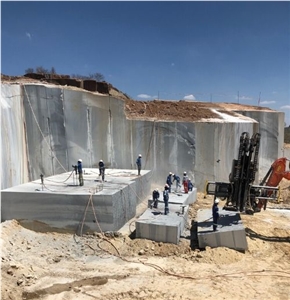A Trip Via Granite Quarries in South Africa: Unveiling Nature's Creativity
Uncovering the Rich Background and Lasting Practices of Granite Quarrying
As we stand on the precipice of revealing the complex tapestry of granite quarrying, a trip with time exposes not just the physical act of removing rock yet likewise the cultural and historic importance woven into the really textile of this practice. From the ancient beginnings that laid the foundation for contemporary quarrying methods to the lasting methods that are shaping the future of this sector, each chisel mark on granite surfaces informs a tale waiting to be unearthed (granite quarries in south africa). The legacy of granite quarrying stretches much past mere removal; it is a testament to human ingenuity, strength, and the long-lasting attraction of this majestic rock
Old Origins of Granite Quarrying
Going back to old human beings, the practice of quarrying granite has been an essential component of human background and building advancement. The earliest proof of granite quarrying days back to ancient Egypt, where huge pyramids and complex sculptures were crafted from this durable rock. The Egyptians made use of primitive devices to draw out granite blocks from quarries, showcasing the relevance of this product in their significant constructions.
Progressing in background, the Greeks additionally made substantial payments to the quarrying of granite. The Greeks made use of granite in numerous building marvels, such as temples and sculptures, demonstrating their skill in shaping and carving this hardy rock. The Romans better improved the strategies of quarrying granite, using innovative devices like blades and hammers to extract and shape granite for their iconic frameworks.
Via the centuries, the method of quarrying granite has developed, with modern-day technologies enhancing efficiency while keeping the classic charm of this natural rock - granite quarries in south africa. From old people to contemporary home builders, the legacy of granite quarrying continues to shape our globe
Development of Quarrying Techniques
The advancement of quarrying strategies has been marked by a continual progression towards better effectiveness and precision in removing granite. From the simple methods used by our ancestors to the sophisticated modern technologies used in modern quarrying procedures, the industry has actually gone through significant innovations. Early quarrying techniques entailed hands-on labor with standard tools such as knives, hammers, and wedges to draw out granite blocks from the planet. As people progressed, methods like fire-setting and primitive explosives were introduced to promote the extraction procedure.
In more recent times, the arrival of machinery reinvented the quarrying sector, enabling quicker removal prices and increased efficiency. Technologies such as ruby cord saws, high-pressure water jets, and pneumatic drills have ended up being standard in modern quarries, enabling for specific cutting and reduced waste. Developments in computer-controlled devices and 3D modeling have actually maximized quarrying procedures, leading to marginal ecological influence and improved sustainability practices. As the demand for granite continues to rise, the evolution of quarrying strategies remains integral to meeting industry needs efficiently and sustainably.
Social Value of Granite
Granite holds an extensive social relevance across various civilizations as a result of its long-lasting existence in architectural work of arts and respected monuments. From the stunning pyramids of Egypt to the elaborate makings of the Angkor Wat holy place in Cambodia, granite has been a material of selection for revealing splendour and longevity in social heritage. In ancient Rome, granite columns adorned holy places and public buildings, symbolizing toughness and permanence. The social relevance of granite prolongs past its physical qualities; it symbolizes strength, security, and timelessness, making it a sign of enduring heritages and customs.

Lasting Practices in Quarrying
In the middle of the rich background of granite quarrying and its cultural significance exists a growing focus on sustainable practices within the sector. As environmental recognition and worries about source exhaustion have enhanced internationally, the quarrying industry has actually progressively embraced lasting techniques to minimize its influence on the environment and bordering communities.

Additionally, reclamation and rehabilitation of quarry sites post-extraction are integral to lasting techniques. By recovering quarried locations to a natural or useful state, such as producing wildlife environments or entertainment rooms, quarriers can balance out the environmental footprint of their procedures and add positively to the local ecosystem.
Heritage of Granite Quarrying
With a historic backdrop steeped in workmanship and commercial development, what enduring influence has granite quarrying left on the landscape of modern-day society? The legacy of granite quarrying goes beyond simple extraction techniques; it has actually shaped building wonders, urban landscapes, and social heritage worldwide. The long lasting nature of granite has made it a recommended selection for monuments, structures, and facilities, standing as a testament to the ability and creativity of quarry employees across generations.
Moreover, the financial footprint of granite quarrying can not be overlooked. The market remains to give employment possibility and drive regional economies in areas where granite extraction prevails. It has additionally spurred technical developments in quarrying strategies and devices, leading to a lot more efficient and lasting techniques.
In regards to sustainability, the legacy of granite quarrying includes initiatives to alleviate environmental influences with recovery projects and accountable source monitoring. By balancing economic rate of interests with ecological stewardship, the sector aims to make certain that future generations can continue to gain from this enduring natural deposit.
Verdict
